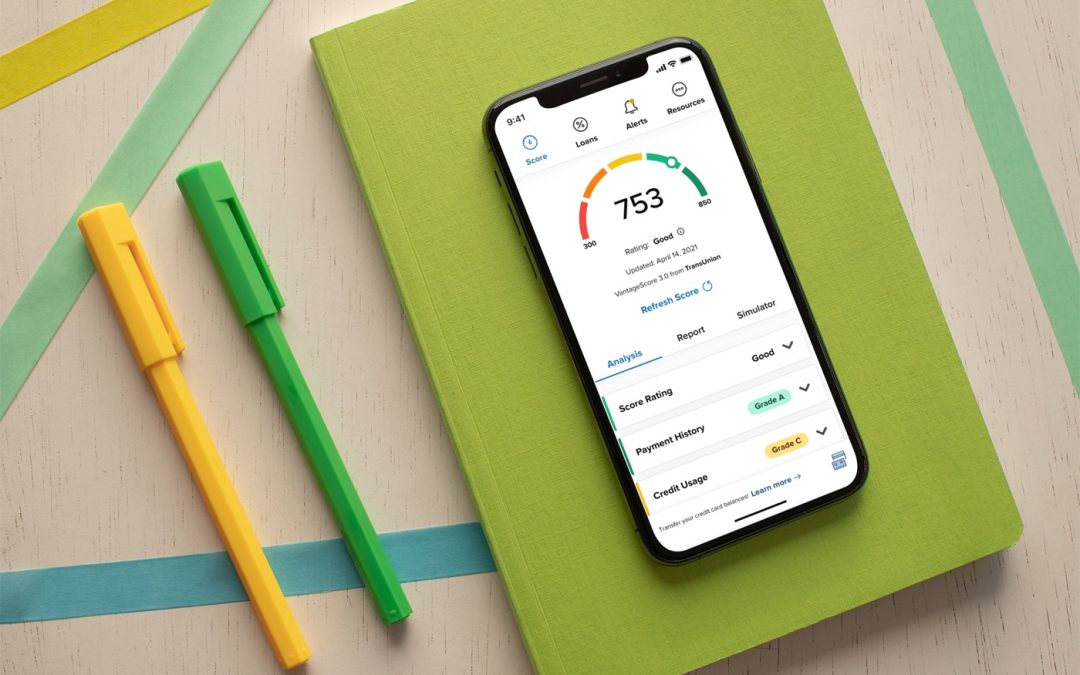The Bottom Line
Small business is important to Central Oregon, and to Mid Oregon. Find tips and resources for business, and information about Mid Oregon’s commercial services and business members.

CyberSmart Tips To Help Prevent a COMPROMISED ACCOUNT
The transition to living life through our devices has become very real for scores of people and businesses. By now, the coronavirus has changed our lives in ways we never expected. This transition includes doing most things from home like working, banking, healthcare, education, shopping, socializing, and more. Unfortunately, adapting to online life also gives bad actor’s a cornucopia of targets to exploit. There’s currently an historic rate of cybercrime thanks the increase in targets and coronavirus-themed lures that grab our attention. That being said, every user has the power to do more than cross fingers and hope for the best. There are proactive steps to take when you suspect an account may be compromised, including ways to help keep it from happening to begin with.
Red Flags of a Compromised Account
Look for irregularities in any accounts as a sign of compromise. Receiving alerts from businesses, banks, social media, and other accounts that logins to your accounts were attempted is a huge red flag. It doesn’t necessarily mean there’s been a compromise, but it lets you know that others have tried. Taking immediate action on any suspicious activity, no matter how insignificant it may seem, should always be Step One.
Immediately change account passwords, especially those showing activity you didn’t authorize. Best to freeze accounts where finances and other important data are kept, when possible; you can always unlock them later.
Regularly check credit reports for irregular activity and don’t hesitate to freeze them from further use. TransUnion, Experian, and Equifax no longer charge to freeze and unfreeze your accounts, so don’t hesitate to do so if needed.
Alert Your Accounts, Especially Financial, about Compromise
If you suspect a financial account has been compromised, alert ALL of the institutions that deal with your finances. These should include banks, credit card companies, credit bureaus, Google, Apple, Amazon, PayPal, Venmo, and other accounts where your financial data is stored or from where it’s accessed. Alerting the involved companies can also serve as a heads-up to them that a larger hack may be in progress and may prevent others from being victimized.
Protect Your Passwords and Change Them Regularly
Protecting the keys to your kingdom starts with savvy and strong password use. Studies show compromised passwords are responsible for 81% of hacking-related breaches. All passwords should be long and include upper- and lower-case letters, numbers, and special characters. Change them regularly and consider using a password manager if you can’t remember them all. Also, look for accounts and apps you haven’t used in a long time and delete them to reduce password exposure and hacking opportunities.
Some of the survey statistics on poor password use include:
- 65% of people reuse passwords across multiple or all accounts
- The average person reuses the same password up to fourteen times
- 91% say they understand the risks of password reuse across multiple accounts, but 59% admit they do it anyway
Use 2FA and Update Preferences
Two-factor authentication (2FA) or multi-factor authentication (MFA) should always be used when available. They add layers of login protection that verify it’s you who’s signing into your account and not a cybercriminal. Update preferences used for your 2FA, especially if you use security questions as part of authentication. The answers to these questions can often be found on your social media and other accounts, and if they are, be assured hackers will find them. Always update 2FA immediately if account compromise is suspected.
Limit What You Share Online
Your PII (personally identifiable information) should remain with you and not broadcast on social media and other sites. PII nuggets such as your address, where you live and work, schools attended, LinkedIn profile and info about family and friends are cobbled together by hackers to create an identity profile that helps them enter your accounts. Hijacked PII is also used for socially engineered and spear-phishing email attacks. These methods use your PII for email phishing and targets those you know, including co-workers, family, and friends. The emails use your identity as bait for the recipients who blindly trust the email and its contents because they believe you are the sender.
For more articles on cybersecurity and related topics, visit Mid Oregon’s Security and Fraud Center.
If you suspect your Mid Oregon Credit Union account or card could be compromised, please contact us.

Five Tips for Living Below Your Means (and What to Do with the Extra Cash)
You can save more and live on less now to build a brighter financial future
By Jean Chatzky* In my book “Money Rules, The Simple Path To Lifelong Security,” I make a case for consistently spending less than you make. It’s Money Rule No. 10: Live below your means.
And no, I’m afraid that does not mean living on what you make. You don’t want to tread water for the rest of your life, living paycheck to paycheck. What you really want is to glide through the pool like Michael Phelps in a 100-meter relay. Becoming a champion saver, if you’ll pardon the pun, means developing ways to consistently, month after month and year after year, live on less money than you bring in so you can save more for the future.
That may also mean finding other ways to earn more, whether that’s getting up the gumption to ask for a raise or promotion, taking a side-job and/or going back to school for training in a field that pays more than your current career.
Here are some strategies for successfully living below your means to help realize your financial goals:
Track your spending, then create a budget
If you don’t have a budget, now’s the time to create a monthly spending plan so you can figure out exactly where your hard-earned cash is going every month. To do this, gather your most recent bank statements and credit card bills and really dig in. Look at how much you have coming in and how much you have going out. Don’t forget to count other income such as rental property or any other side hustle.
Once you see how much you have to work with, look for places to cut spending. If you’re not currently tracking your spending, you can do it old school with pencil and paper, but there are also a number of apps that can help.
Live in a smaller house than you can afford
In other words, just because you are approved for a $500,000 mortgage, doesn’t mean you should spend that much on a house. Same goes for apartment rent. One rule of thumb is for your housing costs to be 35% (or less) of your monthly gross income. That 35% should include the cost of insurance and upkeep.
Those who spend a great deal more than 35% of their income on housing may want to consider refinancing if you own, moving to a more affordable location or downsizing to a smaller home. Another benefit of living in less space is that utility bills and home maintenance costs tend to decrease accordingly.
Keep your new-to-you car a few years longer
Some people never buy a new car, instead purchasing one that’s one or two years old (and still under warranty) to save thousands off the original sticker price. And once they have a new-to-them vehicle, they drive it for a few years after it has been paid off, saving on car payments.
Only buy things on sale
From groceries to electronics to new clothes, never pay full price for things if you can help it. That means when you are at the market, and you are in the mood for steak but the pork chops are on sale, pick the pork. Every time. You can also make shopping supermarket sales more of a game to see how much you can save weekly or monthly on your food bill by simply choosing sale items over those that aren’t discounted.
Save your raises
When you receive a raise or cost of living increase, immediately move that additional money into savings or retirement account. Make it easy on yourself and set up a weekly or monthly electronic transfer for a few days after you are paid. If you can’t move the entire amount of the raise each month, consider taking a portion of the raise and stashing it into savings. Even small amounts add up over time.
*This guest article is from the “Your Money Blog” in Mid Oregon’s Digital Banking Credit Savvy resource. It is made possible by Savvy Money. “Five Tips for Living Below Your Means” (and What to Do with the Extra Cash)” by Jean Chatzky with Casandra Andrews was published in May 2021.

Your Top Five Credit Questions Answered
By Jean Chatzky* When it comes to building and maintaining good credit, the best path isn’t always obvious.
A new survey from U.S. News & World Report shows that nearly one-third of Americans surveyed were unclear about exactly what factors have an impact on their credit score. It’s no wonder with a lack of financial literacy courses available to most school-age students in the U.S.
While some people may not realize it, a good (or excellent) credit score gives you the best chance of applying for and receiving low interest rates on big-ticket purchases such as mortgages and car loans as well as on the credit cards you use for everyday purchases. Your credit also plays a role in whether you qualify to rent an apartment and what you pay for homeowners and auto insurance.
Here are some frequently asked questions about credit with answers to help you make better informed financial decisions.
What’s a credit utilization ratio and the ideal range?
Many people don’t realize that using too much of your available credit can have a negative impact on your credit. That’s where your credit utilization ratio comes in. Essentially, it’s the percentage of available credit that you’re using at any given time. To keep your credit score up, aim to use at most only 10% to 30% of the credit you have available at any time. To do that, carefully monitor how much you spend each month and if you have a heavy spending month, pay your bill before it’s due to bring the ratio down and keep yourself in range.
Will carrying a zero balance on my credit card help build credit?
If you haven’t used your credit card in a six-month period, it could be considered inactive and your issuer could cancel the account. This will unfortunately have a negative impact on your credit score. The reason? That goes back to your utilization ratio. If you have a small amount of debt and a lot of available credit, that means you have a low utilization ratio, which is good. When your credit card issuer closes your account because of inactivity, it decreases your available credit, and dings your credit score.
The solution? To keep your cards active, use them once a month or so, then pay off the balance on or before the due date. Another easy way to keep a credit card account active is to place a monthly automatic charge on the card. Then, pay that credit card itself via an automatic payment. You’ll never be late!
Should I close credit card accounts I don’t use anymore?
Not necessarily. Why? It goes back to that utilization ratio. When you close an account, you lose that line of credit. That tends to automatically increase your utilization ratio which — depending on where it is to begin with, can hurt your score. If you want to switch cards to avoid an annual fee, one option is to replace the line of credit with another card that doesn’t charge fees. You can also ask your credit card issuer (nicely) to switch you to another card with no fee. The alternative? If you do close a card, pay down some debt to keep your utilization ratio in the clear. One more thing to consider if you’re thinking of closing a card is your credit age, closing your oldest card could impact that factor as well.
How can I improve a low credit score?
First: pay your bills on time every time. If you’re having trouble qualifying for a regular credit card (or in the process of rebuilding your credit), consider applying for a secured card. With this type of card, you deposit a sum of money (typically a few hundred dollars). That becomes your collateral to secure your credit. Then you go about using the card and paying the bills. That habitual behavior will help you improve your credit. Check with your credit union or bank to see what secured card options they offer.
How long will it take to see improvement in a low credit score?
Those who keep credit card balances low — at 30% of the credit line or less — and making timely payments for at least six months in a row, should start to see an improvement in their credit scores. Don’t be discouraged if it takes a bit longer, though. Think of this as a marathon, not a sprint.
*This guest article is from the “Your Money Blog” in Mid Oregon’s Digital Banking Credit Savvy resource. It is made possible by Savvy Money. “Your Top Five Credit Questions Answered” by Jean Chatzky with Casandra Andrews was published in May 2021.
